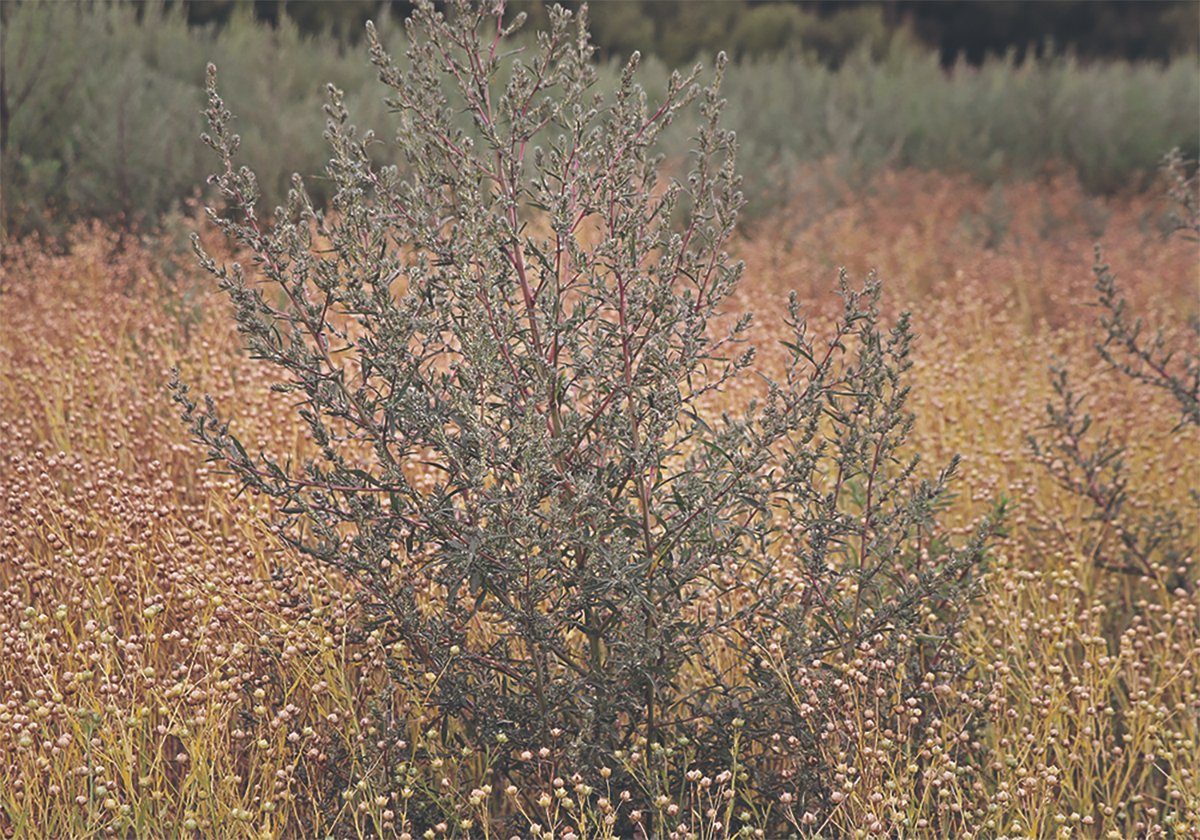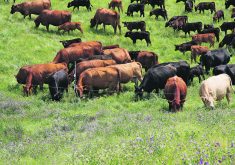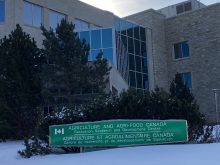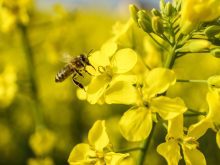Voice of farmers
Two articles by Adrian Ewins regarding the Canadian Wheat Board
elections (Feds Prepared to Reel in Election Spending, August 1), and
(CWB Election Rules Need Enforcers, August 15) require comment.
First, Mr. Ewins is not correct that CARE refused to register as a
third party intervener. We did not refuse or ignore the Election
Co-ordinator’s requests. Rather we asked the co-ordinator to tell us
which specific provisions of the election regulations required us to
Read Also

Kochia has become a significant problem for Prairie farmers
As you travel through southern Saskatchewan and Alberta, particularly in areas challenged by dry growing conditions, the magnitude of the kochia problem is easy to see.
register. We repeatedly asked him the same questions:
1. How did the regulations require us to register; and
2. Which particular provision would we be in violation of if we did not?
These questions were never answered, and the co-ordinator admitted we
had not violated the regulations.
Of far more concern is an
August 7 article with comments by Wheat Board Chairman, Ken Ritter who
says, “other changes recommended by the board ran into problems because
of legal issues surrounding freedom of speech.”
It is disturbing the CWB directors put forward proposals so restrictive
that they raised “legal issues surrounding freedom of speech.” More
shocking, however, is the apparent lack of embarrassment with which Mr.
Ritter admitted that they did so.
When Wheat Board Minister, Ralph Goodale, changed the CWB Act to allow
for elected directors, he promised farmers would be in control of their
marketing agency, and could change it. This may have been Mr. Goodale’s
wish, but Mr. Ritter’s comments indicate the CWB would like to see the
government’s intentions thwarted.
In his world, freedom of speech is reserved for the CWB to write “open
letters” extolling the advantages of single desk selling, while
allowing others to articulate the rationale for a voluntary CWB is
third party intervention that must be silenced.
CARE will, as it did in the last election, abide by both the letter and
spirit of the regulations. All CARE wants is clear and unbiased
regulations. In fact, we have always advocated that these elections be
handled by Elections Canada, an independent, non-partisan agency.
CARE will take all possible steps to ensure that the voice of farmers
will be heard in this election.
– Alanna Koch,
Chair, CARE group,
Edenwold, Sask.
Lid protest
Home canners upset by Bernardin’s discontinuance of their gem series of
canning jars, lids and bands may find the company responds more to
greed than to customer protests.
Try setting up a website where deprived consumers from across Canada
can log on to give the number of jars, lids and bands they’d like to
buy.
When the volume of demand becomes clear, one of two things might
happen: Either Bernardin will realize how many sales it’s passing up
and resume supplying the gem series. Or, more likely, a Mexican or
Taiwanese manufacturer will flood the market with knockoff products
that fit the gem jars people already own.
I suggest the website tactic after the maker of my upholsterer’s
electric staple gun deemed it obsolete, quit supplying staples, and
instead made a new gun which, to me, looks exactly like the old gun but
with different sized staples. A knock-off company now makes staples to
fit my old gun, making it as useful as ever.
– Claudette Sandecki,
Terrace, B.C.
Affordable hay
I take pen in hand, because I am absolutely appalled by the response of
our federal government with respect to the drought situation in Western
Canada. I don’t expect anyone to GIVE US HAY, I expect to pay a fair
market price, which keeps in mind the price of the end product. I do
expect the federal government to negotiate on our behalf, with the
railways to economically bring eastern hay west, to save the beef,
bison, elk, and horse herds.
Our beef herd alone is worth $7 billion annually to the economy, why
send our herd to slaughter, when we have the resources to save it?
This drought is a national catastrophe. Let’s treat it as such.
Why do we pay our federal government the big bucks? Come on boys, wake
up before it’s too late, let’s save our herds of livestock. We need hay
that we can afford to feed.
– June Stephenson,
Buck Creek, Alta.
Losing farmers
When you hear talk of diversification, expansion into mega farms, hog
barns, feedlots etc. and how it will be the panacea of modern
agriculture – one must think back to the time when we did have a
diverse farming system with mixed family farms.
Diversification did exist prior to the expansion into larger
specialized farms as recommended by the federal task force on
agricultural poverty – done in the 1960s and is ongoing today.
The result of which they
recommended getting rid of 60 percent of the farmers with the warped
idea that the ones that are left will make the country rich.
It was done in two stages – 30 percent in the sixties and
the rest in the seventies and eighties.
According to government reports as revealed in the book The Shame of
Farm Bankruptcy, with bibliographical references, by Cameron Harder May
2000, Saskatoon, Sask. – in the 1969 task force language inferred
“Those who lose their farms or are in financial distress – were there
because of lack of ability.” Also prior to this, preferential treatment
was given to larger farms and encouraged them to “specialize” and
“expand” – the rest were ignored and let go by the wayside.
The cancellation of the “Crow Rate” – deregulation of the railroad and
grain handling system, cancellation of the land bank, accelerated
rail-line abandonment, cancellation of other farm related supports for
farmers were all part of the latter ongoing “solution.”
They were actually delighted with the success of it all – but were
actually disappointed that more didn’t have to leave agriculture. They
had not accounted for the older farmers that were unemployable and had
to stay farming to the bitter end.
In other words we’ve been manipulated from a diverse mixed farm to
specialization and expansion into monoculture agriculture. Now we are
told we must now “diversify.” Which way is it? Or are we going through
another phase of manipulation where once again those who are
financially well endowed will be helped and the rest will be left to
fall by the wayside?
– R.E. Kennedy,
Simpson, Sask.
Canola ownership
I read this story with interest (U.S. firm buys big chunk of Canadian
canola industry Aug. 1, 2002 WP.)
Although I’m all for keeping things in Canadian hands, and think it’s
folly not to do so wherever possible, I’m almost glad to see canola
going down the tubes as a Canadian industry. Remember when we were so
proud over having developed it in the first place? Canada’s pride; that
was canola.
But now that it’s impossible for consumers to purchase canola oil
that’s uncontaminated by genetic modification, I’m not unhappy to know
that Canadian profit from it is dwindling. Except for those underpaid
Canadian farmers who produce the seed, of course. At least some of them
still own their land and can choose to grow other crops from honest
seed to satisfy the growing market for clean, safe food. (Note: once
the land is sold to agri-business, the owners will dictate what crops
are grown. Canada is not as small as Honduras, which is in the quite
desperate situation of having to grow coffee and consequently import
much of its food, but the Honduran situation is a warning we need to
heed.)
If this letter makes you at all angry, I hope you’ll also feel a twinge
of sympathy for the struggling Canadian consumer who’s trying hard,
against increased odds, to keep herself and her friends and family safe
and healthy in our increasingly hazardous world. Whoever thought that
the safety of Canada’s food and water supply would become the paramount
issue of our time?
– Pat Barclay,
Salt Spring Island, B.C.
PRO accuracy
The editorial comment that was in the Aug. 8 edition of the Manitoba
Co-operator shows the paper is sinking to a low that would not have
happened under its previous administration. The suggestion that the
Canadian Wheat Board barley PRO somehow misled farmers is completely
unfounded. Farmers saw the PRO and could make the choice. In most
cases, farmers chose the domestic price because the non-Board feed
market simply has to offer a few cents over the PRO to attract supplies.
Speaking of the accuracy of PROs, we should look at how the non-board
sector is doing in this regard. A good canary seed contract last winter
was 18 cents per pound. It is now 30 to 35 cents. What did that cost
farmers? Many oats were presold in the $2 and $2.25 range. Farmers now
find themselves wanting to buy out contracts to take advantage of
present-day higher prices. How did canola prices fare? Almost on a
daily basis throughout this crop season, market analysts were advising
us to lock in anything over $7 per bushel. Now, it is over $8.50.
Many hours of diligent work go into establishing the PRO and it is
generally accompanied by detailed market commentary that explains the
numbers. The CWB is much more forthcoming with information than the
non-board side, which tries to explain itself by using phrases like,
market correction, to explain changes to prices.
What really seems to bother the (Co-operator) editorial writer, is that
the farmers received for their barley what the PRO had projected.
What’s more, because of the CWB system, more than $5 million dollars
were left over for potential use in much needed research, which other
industry players have been unwilling to fund.
– W. Harder,
District 10, CWB Director,
Lowe Farm, Man.
















